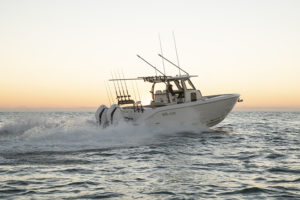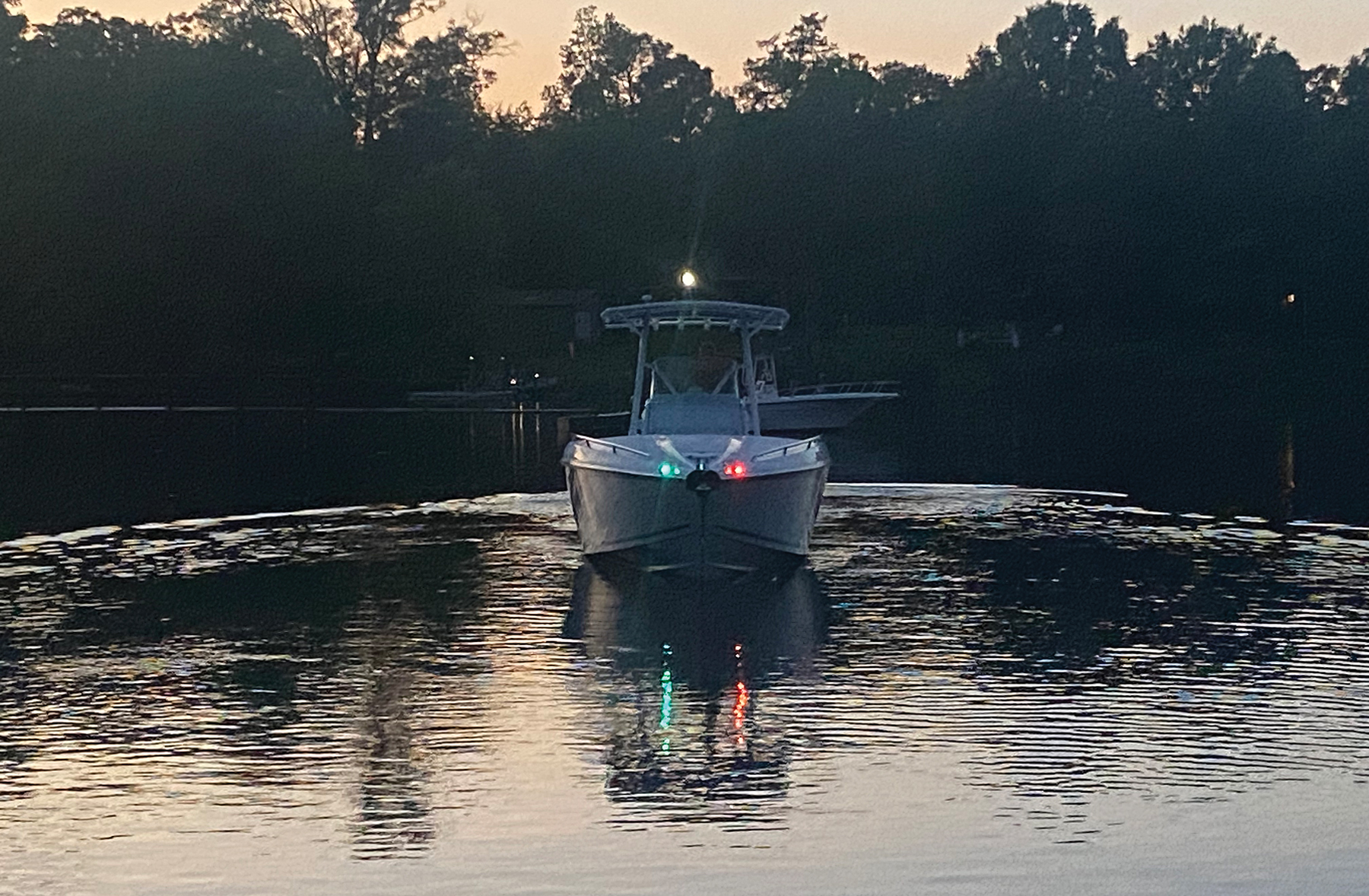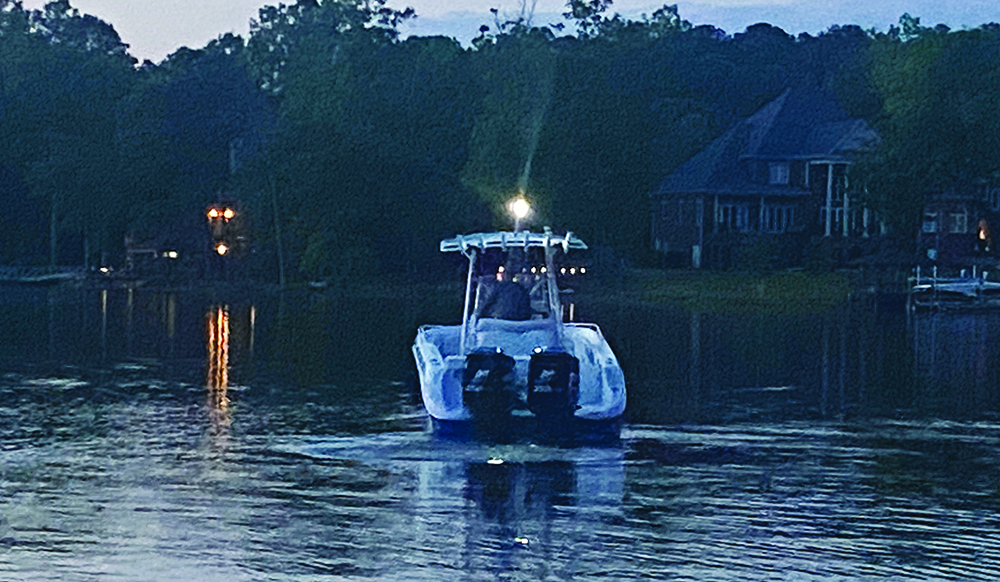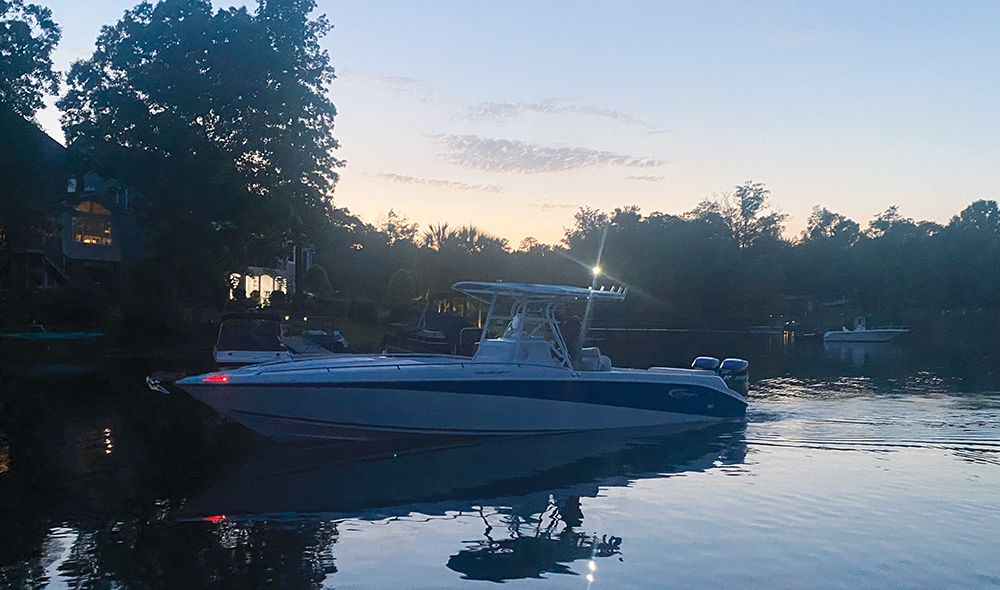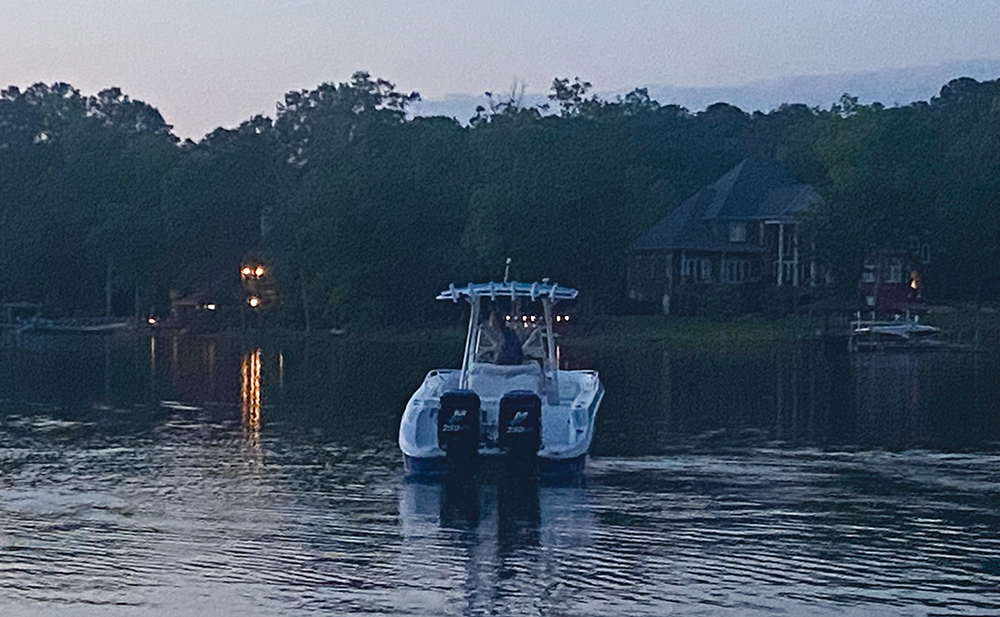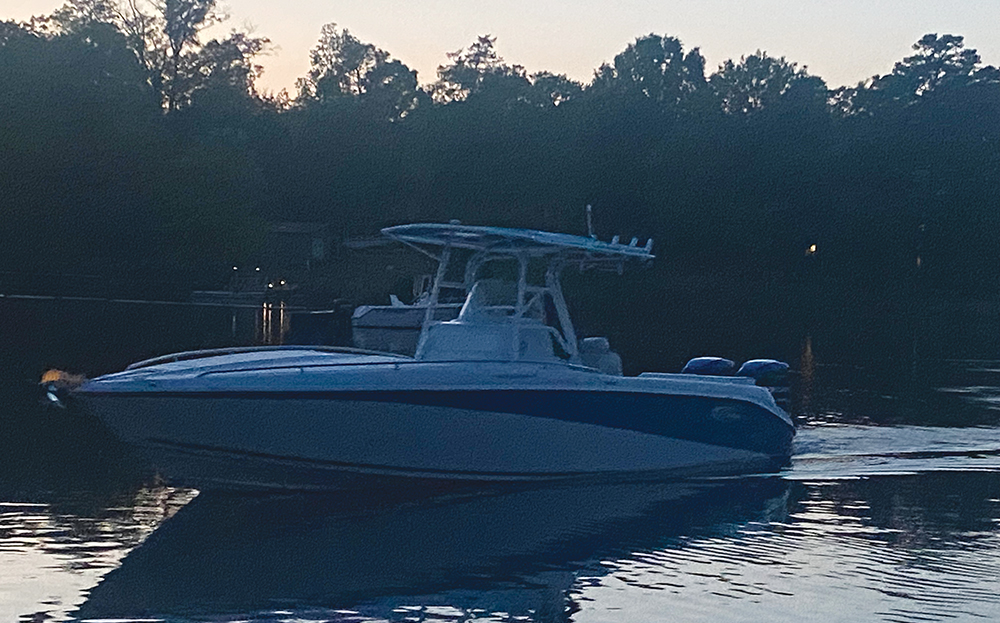FEATURED PRODUCT
Patented safety lighting system will save lives on the water.
Most of us take for granted the headlights and daytime running lights turning on automatically when starting up a modern car. Front headlights serve an important safety function to help the driver see the road and surroundings, while identifying an active driver on the roadway.
Yet the technology, which was mandated by Sweden in cars nearly 45 years ago, has yet to make its way into the marine industry. Boaters must manually turn on their running lights, even though the tech has been available for decades.
A pair of inventors from South Carolina are hoping to make a safety lighting system for watercraft a standard feature on new boats built in the United States.
Both Maron Isom and Scott Trotter live on Lake Murray in South Carolina have seen a share of boating accidents, especially at dusk and nighttime because boats didn’t have running lights operational.
“One day I’m leaving work and the headlights come on automatically, and I’m like, ‘Well, why the hell don’t boat lights come on automatically?” Isom said. “That’s where it kind of evolved and we started putting this together.”
While U.S. Coast Guard rules require captains to use running lights while operating a boat at night, there is no federal mandate that boats have the automatic sensor technology.
Trotter, 52, bought his first boat at age 19 and said for decades there was little innovation in the recreational market until the launch of digital steering, joystick controls and improved radar.
“All the lighting and lanyard issues are still the same,” he said. “This technology is so simple, but it could change the industry. I would equate some of this stuff comparable to a seatbelt. It just doesn’t make any sense that this hasn’t been a topic of discussion prior to now.”
WITH LIGHTS
WITHOUT LIGHTS
Technology Patent
Isom and Trotter were granted patent No. 11,691,698 from the U.S. Patent and Trademark Office in July 2023, nearly 20 months after filing the patent request for a watercraft safety lighting system.
The system involves one or more light sensors on a boat for measuring ambient light levels, which is connected to an electronic controller. As darkness sets in, the electronic controller is programmed to switch on the navigation lights and adjust other lighting for nighttime operation.
“The system may also shut off docking lights at a predetermined speed after dark, and may include alarms to warn the boat captain of improper lighting settings in low-light conditions,” according to the patent.
The safety lighting system is only activated when the ignition is on or the boat is underway. Trotter said the boat operator can override the system like in an automobile.
“The goal was to make something that requires no user input and everything is automated,” Isom said. “You would have an override, but there’s really no reason to use that override, it’s no different than in your car. Every vehicle I own right now has automatic lighting, and they just come on, you don’t have to think about it.
Safety First
According to the U.S. Coast Guard’s 2022 Recreational Boating Statistics, inadequate onboard navigation lights ranked in the Top 10 as a contributing factor to boating accidents and casualties. Operator inattention is the leading cause.
There were 22 accidents because of poor or nonoperational navigation lights, which led to 26 injuries and three deaths. Considering the accidents occur after sunset, when few boaters are still on the water, it showed the importance of navigation lights.
Mandating the new safety technology could reduce deaths if forgetting to turn on navigation lights.
“I have a 34-foot center console and when I leave a marina, restaurant or leaving my house, you crank the boat you’ve got your navigation screen on, your GPS, all your interior lights and I’ve pulled away from the docks and not even realized my navigation lights weren’t on,” Isom said.
For parents with children who are old enough to operate the family boat, it’s an extra peace of mind.
“To know the navigation lights will come on automatically would definitely make us more comfortable to know they are safe,” Isom said.
Getting the Safety Tech to Market
Isom and Trotter both work in the automotive industry and are passionate recreational boaters. What they have is patented safety technology and they’re looking for someone to develop it and bring it to market.
The technology would be for new boats, but Trotter and Isom sees no reason why older boats couldn’t be retrofitted too. Isom would like to see builders offer the tech as a standard safety feature.
The pair has a second patent for lanyard technology that shuts down the boat when the driver leaves the helm, preventing a runaway boat. “Both patent ideas were designed with the idea of making boating safety easy and no additional effort required by the operator,” Isom said.
The pair has already heard from a few people who were surprised no one had adapted the safety technology to the marine industry.
“We’ve had a lot of discussions about this boat safety stuff,” Trotter said. “We were surprised no had thought of this technology and the lives that could be saved.”
For more information about this life-saving technology,
contact Maron Isom at 803-465-1414 or via email at maronisom@aol.com.
